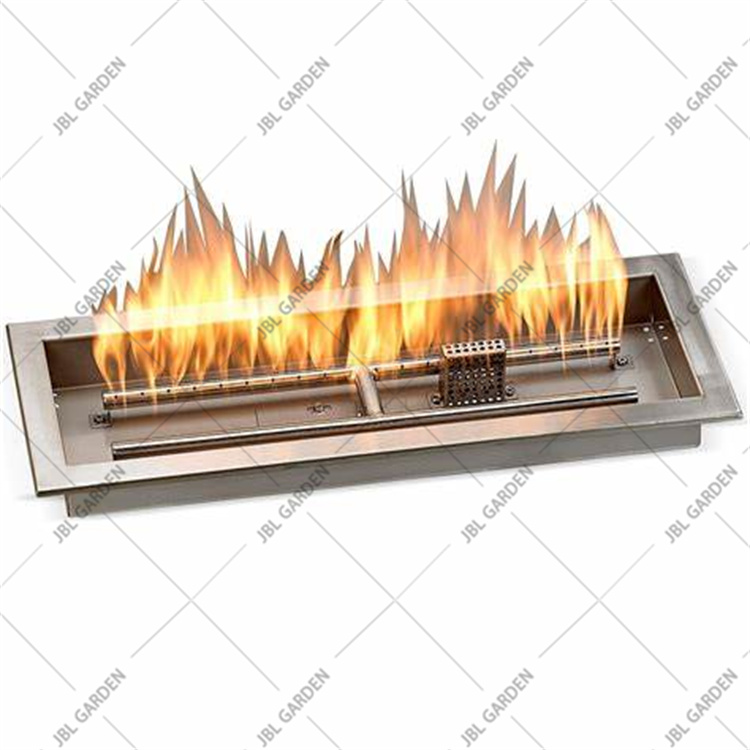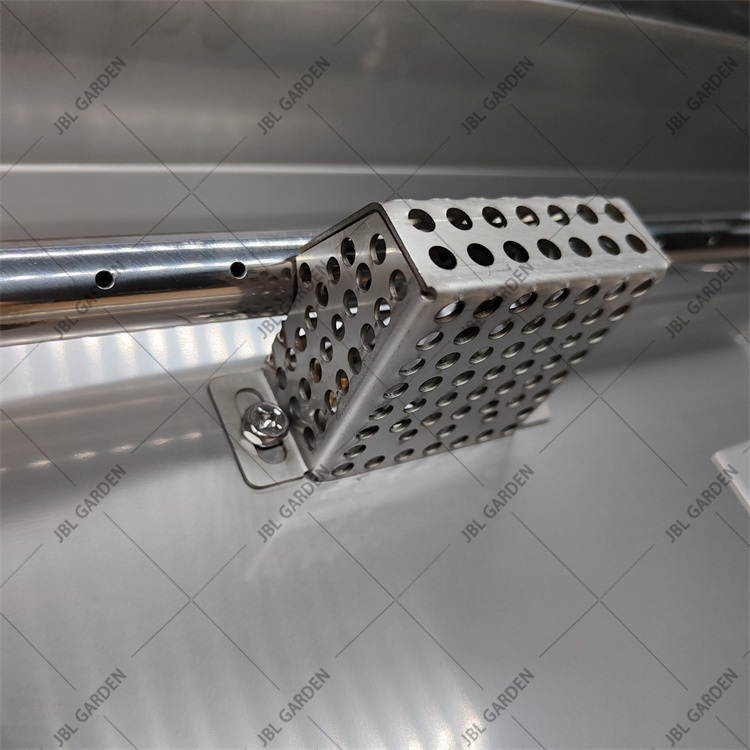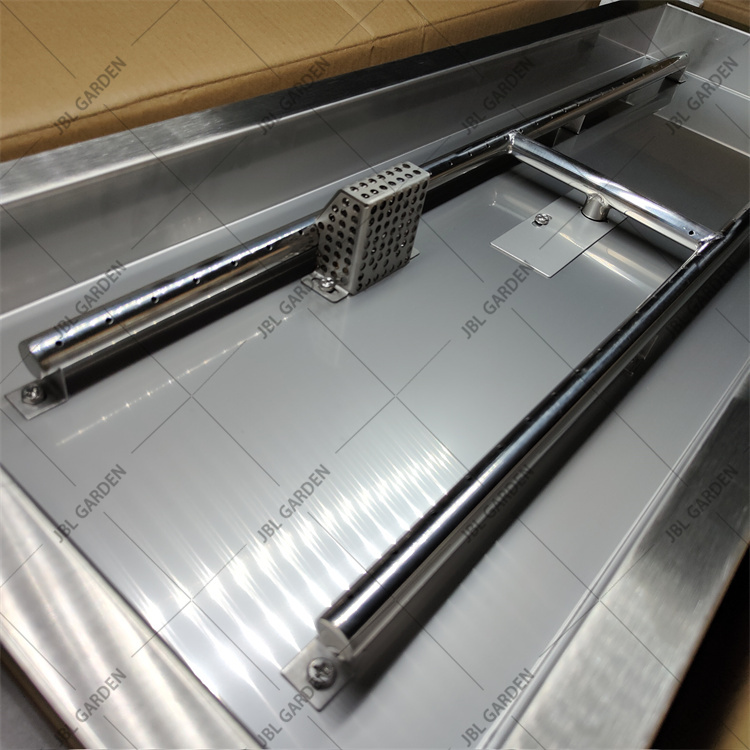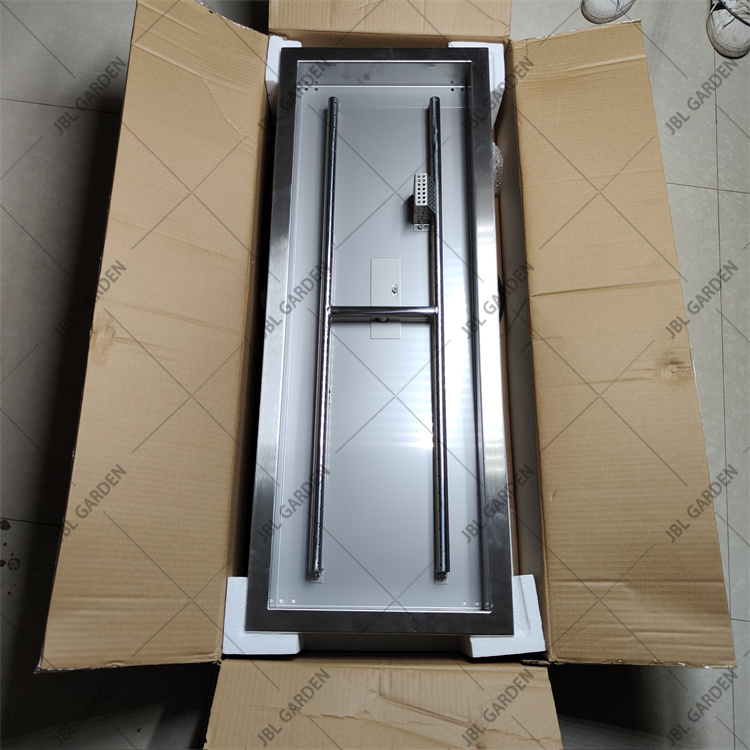Luo Qinghai Liu Jianxiang Xiong Jun Nanhua University Hengyang 421001, Hunan
Abstract: Information and multimedia technology are increasingly becoming necessary modern engineering teaching methods. This paper analyzes the significance of the integration of information and multimedia technology and heat transfer experiment teaching, and summarizes the application methods, including analog demonstration, digital experiment, resource sharing, etc. In optimizing practical teaching, both the teacher's leading role and the student's dominant position should be brought into play. Simulation experiments, digital experiments, and traditional experiments should complement each other and complement each other.
Keywords: information and multimedia technology; experimental teaching of heat transfer; cultivation of exploration ability
The development of information and multimedia technology has laid the foundation for the modern teaching model, and at the same time created conditions for the implementation of the excellent teaching model, but its application effect is also restricted by many factors. Heat transfer studies the heat transfer process and its laws, and is a required basic course for many engineering students. The development of heat transfer and its integration and penetration with other disciplines directly promote the rapid development of modern science and technology. Heat transfer is a subject based on experiments, and the quality of experimental teaching largely determines the effect of heat transfer teaching. The integration of information and multimedia technology and heat transfer experiment teaching is of great significance to the realization of diversification and modernization of experimental methods and the cultivation of students' exploration spirit.
1. The significance of the integration of information and multimedia technology and heat transfer experiment teaching
Information and multimedia technologies are increasingly becoming necessary modern engineering teaching methods.
1. Under the situation of continuous expansion of enrollment, there is a serious shortage of educational resources in colleges and universities. The integration of information and multimedia technology with experimental teaching can reduce the dependence on experimental hardware equipment and increase the flexibility of experimental teaching time and space arrangement.
2. The integration of information and multimedia technology and experimental teaching can strengthen the connection between experimental teaching and society, life and engineering. The interactivity of information and multimedia technology and the advantages of hypertext links also provide a reliable "teacher-student interaction" Guarantee.
3. With the help of modern information and multimedia technology, you can track the progress of modern science and technology, appreciate the progress of modern heat transfer research and its latest achievements in engineering applications worldwide, and grasp the development direction and research hotspots of heat transfer.
4. With the help of modern information and multimedia technology, numerical simulation experiments can visually display abstract concepts such as dynamic temperature field, heat conduction and heat convection mechanism, which can help students understand the nature and laws of heat transfer.
5. With the help of modern information and multimedia technology, the Digital Information System Laboratory (DISLab) improves the degree of experiment automation, reduces the human error of the experiment, and contributes to the cultivation of students' innovative ability.
6. With the help of modern information and multimedia technology, it is possible to establish a cross-professional and cross-school curriculum alliance, establish a heat transfer course forum based on modern network technology, and realize the sharing of heat transfer education and teaching resources.
2. The application of information and multimedia technology in the experimental teaching of heat transfer
The integration of information and multimedia technology and heat transfer experiment teaching plays a unique role in different aspects of the experiment.
1. Information and multimedia technology as simulation demonstration tools
The experimental class not only requires students to complete the experimental steps under the requirements of the experimental specifications, it is important to deepen the understanding of related concepts and laws through observation of the experimental process. Information and multimedia technology as a demonstration tool can make static things dynamic, visualize microscopic phenomena, and visualize abstract knowledge. The heat conduction simulation demonstration is shown in Figure 1.
For many heat conduction problems with complex geometric shapes encountered in engineering technology, due to mathematical difficulties, it is not yet possible to obtain analytical solutions. In recent decades, with the rapid development of computer technology, the numerical methods for discretely solving physical problems have been increasingly widely used. Numerical heat transfer has become a solution to complex heat transfer problems, especially non-steady state heat transfer problems. The most important way. The numerical simulation experiment can visually demonstrate the temperature distribution characteristics and change process of the object in the process of unsteady heat transfer (as shown in Fig. 2), but the traditional experiment can not show it at all.
Convection heat transfer is one of the basic methods of heat transfer, but the traditional experimental process can only reflect the actual effect of convection heat transfer, and students have difficulty understanding the nature and laws of convection heat transfer. With the help of information and multimedia technology, it is possible to simulate and demonstrate the changing process of temperature field and velocity field in the process of convection heat transfer, and can selectively and repeatedly observe the changes of the boundary layer, which is helpful for students to establish a complete physical picture of convection heat transfer. The convective heat and mass transfer boundary layer is shown in Figure 3.
With the help of simulation technology, you can also demonstrate experiments that are difficult to achieve in conventional facilities, and perform dynamic analysis of physical processes, such as nuclear boiling simulation demonstration (as shown in Figure 4).
The traditional experimental mode is limited by facilities and venues, and can only focus on the demonstration of basic principles. It is difficult to combine basic theory and engineering practice. Therefore, engineering students often have to go through a long vocational training stage to be independent after graduation Undertake professional and technical work. With the help of simulation technology, you can simulate and demonstrate the application of heat transfer in modern engineering, and realize the direct docking of basic theory of heat transfer, experimental demonstration, and engineering applications. In the heat transfer course, the content of the engineering experiment demonstration depends on the professional needs. For the building environment and equipment engineering major, the content of the heat transfer engineering experiment simulation demonstration mainly includes the following categories: (1) building and environmental heat exchange; (2 ) Building cold and heat sources and terminal facilities; (3) Heat and mass exchange equipment and heat transfer enhancement; (4) Air treatment process and equipment; (5) Building cooling / heating cycle.
2. Set up a digital information system laboratory
The digital information system laboratory is a new type of experiment system composed of "sensor + data collector + experiment software package + computer". It uses sensors to collect experimental data, and connects to a computer through an interface to complete data collection and analysis. When necessary, it can draw data analysis tables and graphs, and can also analyze and discuss experimental errors. Using the DIS experiment system can realize automatic collection of multiple parameter experiment data, realize long-term unattended experiment, reduce experiment human error, simplify the work of processing data, and reduce the labor intensity of experiment. An unattended laboratory indoor and outdoor temperature change control experiment 120 hours results shown in Figure 5, during the experiment, a set of data is automatically collected every 20 minutes.
The DIS experiment simplifies the process of collecting experimental data, but requires students to have a higher ability to design experimental schemes and to process experimental data. DIS experiment has brought many experiments from qualitative observation to quantitative analysis, and the experiment quality and teaching effect have been improved. Cultivating students' creative thinking ability is the most important goal of experimental teaching. The DIS experiment can easily realize the simulation experiment system to demonstrate different experimental states by changing the parameters. In the comparative analysis, students deepen their understanding of the basic concepts and basic laws of heat transfer. For example, changing the temperature conditions can change the performance of the heat pump system (the heat pump simulation is shown in Figure 6), changing the value range of the Bi parameter can change the temperature distribution characteristics of infinite flat walls, and changing the thermal conductivity can change the periodic boundary conditions of semi-infinite objects. The characteristics of the next temperature wave, etc.
3. Realize the sharing of course resources
In the network environment, you can download, copy, or establish friendly links to share virtual experiments based on the Internet and other course resources. Using the online version of "Simulation Heat Transfer Laboratory", students can watch simulation experiment demonstrations through human-machine dialogue, and can also discuss through Internet course forums if they encounter problems. You can also travel online to obtain related resources, such as teaching videos, electronic lesson plans, engineering cases, historical masters, subject history and allusions.
With the help of information and multimedia technology, it is possible to establish cross-disciplinary and cross-school curriculum alliances, and make full use of the superior scientific research and experimental conditions of national key disciplines, national key laboratories, national engineering centers or national key scientific research bases, and engineering practices of outstanding enterprises outside the school And scientific research test conditions, to achieve the sharing of high-quality resources, such as excellent heat transfer course resources, engineering cases related to the course, etc. On the one hand, you can feel the influence of different educational styles and academic atmosphere, as well as access to advanced instruments and equipment; on the other hand, through cross-disciplinary and mutual exchange, it is conducive to the standout of innovative talents.
Third, optimize the experimental teaching link
The integration of information and multimedia technology with experimental teaching should firstly give play to the leading role of teachers and guide students to observe and think; secondly, to highlight the dominant position of students and effectively cultivate the students' exploration and innovation ability.
1. Give play to the leading role of teachers
Basically does not change the traditional teaching mode, but only uses information and multimedia technology as a demonstration tool for experimental teaching content. Generally, on the basis of traditional experimental demonstrations, computer simulation experiments are used to demonstrate the process, so that the appearance of students can be strengthened, or through simulation experiments to demonstrate the contents that are difficult to achieve in experimental experiments, and then abstract and generalize to form concepts, find features, law. Three basic heat transfer methods, such as heat conduction, heat convection, and heat radiation, traditional experiments can only reflect the results and appearance of heat transfer, and the experimental conditions are difficult to control, and it is difficult to achieve a single heat transfer process. With the help of simulation experiments, not only can you demonstrate 3 The microscopic mechanism of a basic heat transfer method, and can demonstrate the process and laws of a single heat transfer method. Help students build a dynamic image of the basic heat transfer process and deepen their understanding of abstract concepts and laws.
2. Highlight the student's dominant position
In traditional experimental teaching, due to the limitations of conditions, students' desire to explore is often not well satisfied. The information and multimedia technology environment can provide students with favorable conditions for inquiry. With the help of the virtual simulation environment created by professional tool software, students can observe phenomena, read data, explore and discover the changing laws of research objects in the dynamic scene space. Through the combination of numerical heat transfer and information and multimedia technology, analyze unsteady heat transfer phenomena and laws, learn the dynamic analysis of the physical picture, and deepen the understanding of the nature and laws of heat transfer. In heat transfer teaching, exploratory experiments that are inconvenient to demonstrate in this type of conventional experiment are usually: heat and mass transfer optical measurement experiment, infrared thermal imaging experiment, heat exchanger performance experiment, unsteady state heat transfer problem detection, visual demonstration of boundary layer , Visualization of fluid swept tube bundle, etc.
4. The complementary advantages of information and multimedia technology and traditional experimental methods
1. Complementarity of simulation experiment and traditional experiment
Experimental teaching is an important way to cultivate students' interest in learning. Information and multimedia technology can break through the limitations of traditional experimental instruments and supplement and perfect the unsatisfactory real experiments.
Information and multimedia technology can simulate and reproduce complex experiments that are difficult to observe and become a supplement to routine experiments. Simulation experiments can demonstrate idealized models that cannot be realized under normal conditions, and can make up for the lack of students' perceptual knowledge. Therefore, combining simulation experiments with traditional experiments will have a multiplier teaching effect.
In order to prevent accidental injuries, or due to the limitation of experimental conditions, there are some experiments, such as high temperature or cryogenic experiments, vacuum or weightless environment heat transfer experiments, etc., which cannot generally be done in ordinary laboratories, and the virtual experimental environment can solve this One problem is conducive to the improvement of students' knowledge construction.
It is worth noting that cultivating students' practical ability and rigorous, fact-based scientific attitude is one of the basic purposes of heat transfer experiment teaching. Simulation is an idealized model. For experiments that are easy to operate and have obvious effects, it is not appropriate to use computer simulations in terms of authenticity or effect. If you ignore the value of traditional experiments and blindly substitute virtual experiments for real experiments, it will weaken students' actual operation ability and scientific awareness, deviating from the original intention of experimental teaching.
2. Complementarity of digital experiment and traditional experiment
The digitized experimental environment and resources are the extension of the real environment and resources in space and time, and they are not essentially different from the real environment and resources. However, because the digital experiment involves more comprehensive and technical knowledge, students are relatively rusty on many contents, and it is easy to divert attention during the experiment. At the same time, the high degree of automation of digital experiments makes it easy for students to focus solely on the collection and processing of experimental data, ignoring the physical meaning of experiments, and turning experiments into digital "games."
There are obvious differences between traditional experiments and digital experiments on students: the former focuses on cultivating meticulous, conscientious and patient habits, the latter is conducive to cultivating the ability to think and explore in observation; the former attaches importance to the training of experimental operation skills, and the latter It is conducive to the cultivation of the ability to use information and multimedia technology; the former attaches importance to the cultivation of data processing ability, the latter is conducive to the cultivation of analysis and judgment ability; the former students are relatively limited in the design of experiments, attach importance to the constraints of experimental norms, the latter students The constraints of self-design and operation are small, which is conducive to independent exploration and the cultivation of innovative ability; therefore, although digital transformation is an indispensable part of the improvement of experimental teaching conditions in modern engineering education, traditional experimental conditions should be regarded as laboratory construction Basic, information and multimedia technology equipment are only powerful auxiliary or supplementary equipment for traditional experiments.
V. Conclusion
1. The integration of information and multimedia technology and experimental teaching is an inevitable requirement of modern engineering education. It has practical significance for alleviating the pressure of experimental teaching hardware shortage, realizing the sharing of educational resources, improving the effectiveness of theoretical teaching, tracking the frontiers of subject development, and cultivating students' exploration spirit .
2. Information and multimedia technology can not only be used as simulation and demonstration tools for principle experiments and engineering applications, but in innovative and comprehensive experimental design to improve the degree of automation, visualization and reproducibility of experiments, reduce experiment costs and work intensity, and reduce experiments Human error has a greater advantage than traditional experimental methods.
3. With the advantage of the integration of information and multimedia technology and traditional experimental methods to optimize practical teaching, both the teacher's leading role and the student's dominant position should be played. Simulated experiments, digital experiments and traditional experiments should complement each other and complement each other.
References [1] Luo Qinghai, Qi Chunming, Zhou Shukui. Multimedia application for fluid mechanics teaching. The 2nd International Conference on Information Technology in Education [J]. 2009, 12: 11 ~ 13
[2] Han Fang. Research on Quality Assurance of Multimedia Teaching in Colleges and Universities [D]. Master Degree Thesis of Chongqing University, 2007, 4
[3] He Yaling, Tao Wenquan. Discussion on the construction of large machinery [J]. China University Education, 2003, 3: 14 ~ 16
[4] He Yaling, Liu Zhigang, Tao Wenquan, et al. Give full play to the auxiliary role of CAI in the teaching of "Engineering Thermodynamics" [J]. Higher Engineering Education Research, 2000, 7: 80 ~ 82
[5] Feng Rongshi. DISLab and Mechanics Experiment Teaching [J]. Physics Teaching, 2004, 11
[6] Feng Rongshi. DISLab and Electromagnetics Experimental Teaching [J]. Physics Teaching, 2004, 12
[7] He Zhen, Wang Peiqing. On the integration of information technology and physics experiment teaching [J]. China Educational Technology Equipment, 2003, 8
Traditional style low-rise table-top Fire Pit pan. Its size (980mm by 370 mm) and weight make this fire pit bowl easily transportable for camping, fishing or a simple barbecue. Because of its compact size, it's also convenient for use on balconies of small terraces.The fire pit pans & burners are made of 304 stainless steel. Designed to withstand extreme heat & harsh weather without damage or rust. Creates a brilliant, uniform flame. Add fire glass or lava rocks to match your decor to complete the look.
| Name |
Stainless Steel Propane Fire Pit Burner |
| Material | Stainless steel |
| Size | 800*800mm |
| Steel thickness | 2mm |
| Weight | 3.5KG |
| Packing | carton |




Packing
Packing will by carton and pallet

Rectangle Fire Pit Burner,Fire Pit Insert Rectangle,Rectangle Log Burner,Rectangle Burner
Henan Jinbailai Industrial Co.,Ltd , https://www.jblbbqgrill.com
![<?echo $_SERVER['SERVER_NAME'];?>](/template/twentyseventeen/skin/images/header.jpg)